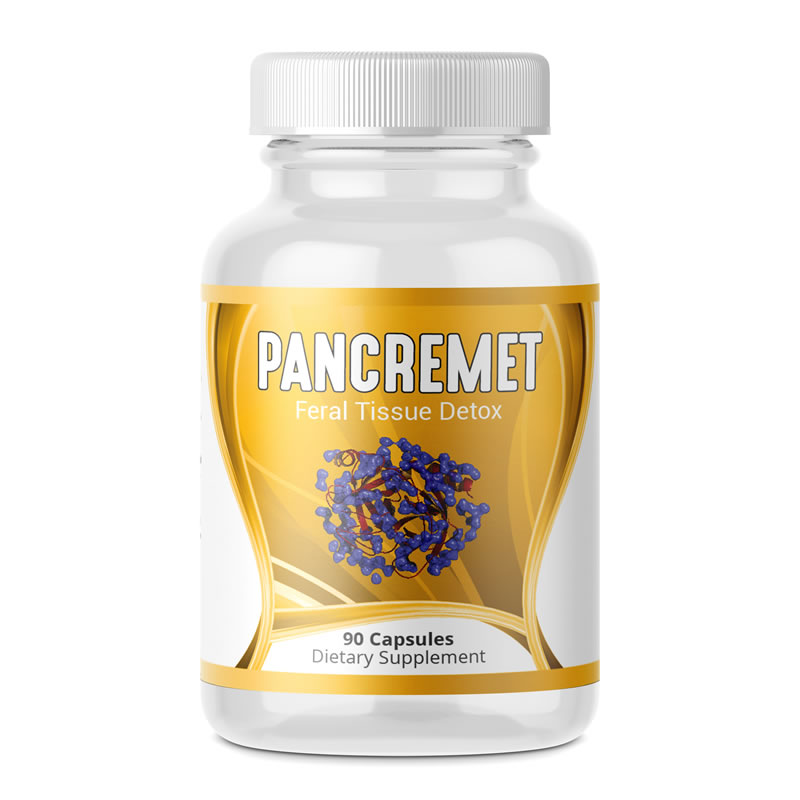- What's New?
- Why a Home Gym?
- Functional Trainers
- Longevity Training
- Fat Loss Workouts
- The Best Workout For Men
- Fat Loss For Women
- Healthy Eating
- How To Improve Your Microbiome
- Biosuperfood
- Iridesca
- Superfood
- Shilajit
- Micellar Curcumin
- Rez-V
- Beta Glucan
- P-Well
- Copper GHK
- Fibrenza
- LipiCept
- Flameout
- Igniter
- Indigo-3G
- Omega-Man
- Feral Tissue Protocol
- Pancremet
- How To Avoid Microplastics
- AirDoctor 3500
- ENVION Therapure
- Airpura R600
Pancremet Review
---------------------------------------------------------------------------------------------------------------- Pancremet ReviewIn my article on The Feral Tissue Protocol, you’ll find a detailed breakdown of the fundamental triggers of feral cells, and 6 bodily programs your body turns on as a result of one of the three fundamental triggers. One of those programs your body turns on is its Mucin (mucus) Program because of the rapid increase of acids in your body from the Fermentation Program. The body has a solid reason for doing this: Your intestines, lungs, and sinuses have a natural Mucin Program that they use to deal with acids. However, similar to how stem cells (and inflammation) are only viable solutions for acute injuries, the Mucin Program also becomes bastardized when it’s dealing with feral cells. Why? Well, the Mucin Program cannot remove feral tissue from body parts outside of the intestines, lungs, and sinuses. But it’s worse than simply not being able to remove it. The Mucin Program actively worsens the effect of feral cells and feral tissue. Instead of removing the cells, it creates a protective biofilm around their home. This biofilm attracts chronic infections and also decreases the absorption of any nutrients from foods, supplements, or drugs. Now the good cells starve, and feral cells are protected.
As part of our
Pancremet review, a potential solution to consider here for the Mucin Program
is Pancremet. Because these pancreatic enzymes break down mucus, they are
helping to expose the feral cells to your defenses, and also helping to feed
healthy cells. You definitely want to break that mucus sheath down, and
Pancremet may help. The last program that the body employs is called the Trophoblast Program, and your body activates it in its last attempt to supply your body with short-chain fatty acids (SCFAs) as a direct result of a body pH imbalance. If you’ve been pregnant before, then you might already know the term. In pregnancy, the trophoblast becomes the placenta. And there’s a surprising amount of similarities between the trophoblast and feral tissue… They both:
The last one is important because the ultimate goal, according to the body, of activating the Feral Cell Protocol is your body’s emergency responses to supply itself with more SCFAs. And lactic acid is not only a SCFA, but potentially the most important one. Well, like many of the other Programs the body activates, this Program has a fatal flaw when it’s not attached to pregnancy. During pregnancy, around day 56 (of gestation), the placenta gets a signal to stop being aggressive. So it stops invading. It stops making new blood vessels. And it starts acting like normal tissue - because if it didn’t then the mother could die (and this does happen, albeit rarely, today). In pregnancy, around day 56, there are special pancreatic enzymes that turn off the Trophoblast Program before it can cause damage to the mother or child. Why does the fetus, which is not digesting food or eating anything, need pancreatic enzymes? Well, these pancreatic enzymes trigger the placenta to become normal tissue again. But these enzymes don’t activate when it happens in feral tissue. This discovery was made by Dr. Beard, who noticed this correlation years ago. And he even started injecting people with pancreas extracts that had these enzymes in them, and a lot of miraculous results followed. Dr. Beard was then followed by Dr. Kelley and then Dr. Gonzalez before the FDA caught wind of it, and swiftly made the injections of pancreatic tissue illegal. This made people turn to supplements, but it required taking 100+ capsules per day. That said, when you supply the body with these special enzymes, they can work as they do in the case of the pregnant mother. But this is easier said than done. Especially after the FDA banned the injections of pancreatic tissue. So here’s the problem: The enzymes that Dr. Beard initially injected were the precursor forms of the enzymes, not the actual enzymes themselves. The precursor enzymes are trypsinogen and chymotrypsinogen. And the “ogen” part at the end means they haven’t been activated yet. When these doctors injected these precursor enzymes, they would go to the site of the feral tissue, and then they would get activated at the site of the feral tissue, just like what happens in the placenta. And they were triggering the feral tissue to shut down, to stop growing. When you take the enzymes orally, the stomach converts them into the active form, and the trypsinogen becomes trypsin, the chymotrypsinogen becomes chymotrypsin. Now we have the right enzymes, but in the wrong form. It still works. But not as well. Dr. Gonzalez was telling people on this protocol to take 150 to 200 capsules of trypsin and chymotrypsin a day. They needed to take an absurd amount because they were getting the wrong form. That’s the bad news. The good news? With Pancremet, since it is liposomal, the enzymes survive the stomach in their inactive form. And since they stay in their precursor form until they reach the small intestine, the correct form gets delivered. Help reduce the risk of tumors, support normal cell growth, and increase pancreatic enzymes with Pancremet. If you are a lover of all things health and fitness, or if you'd simply love to learn more about these topics, please subscribe to Coach John's newsletter below. |
